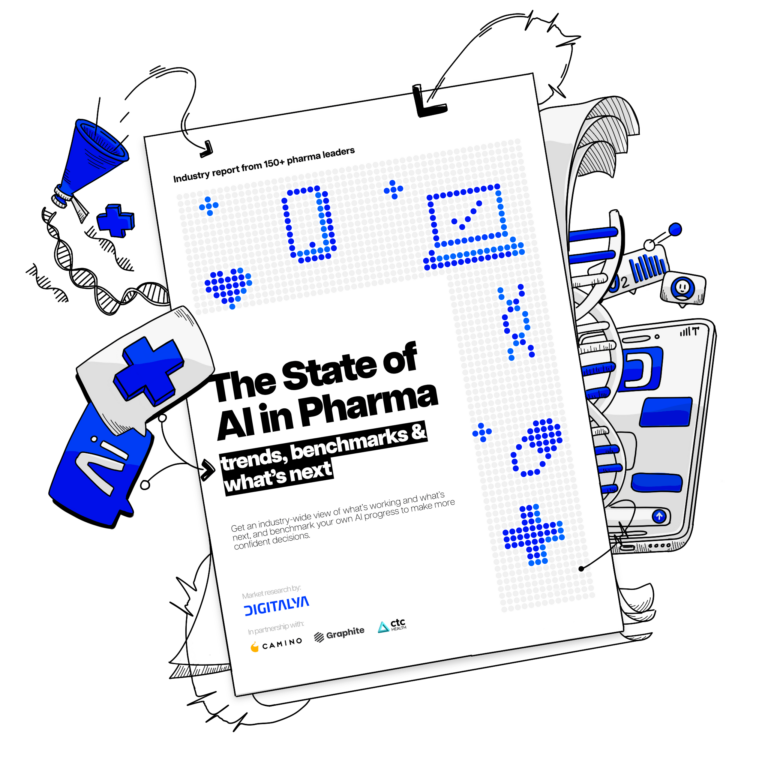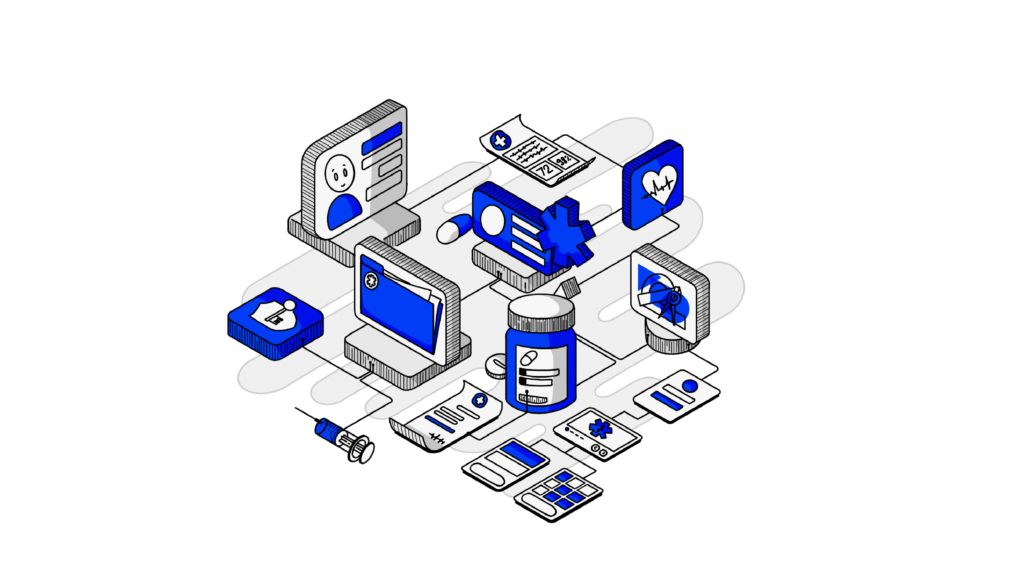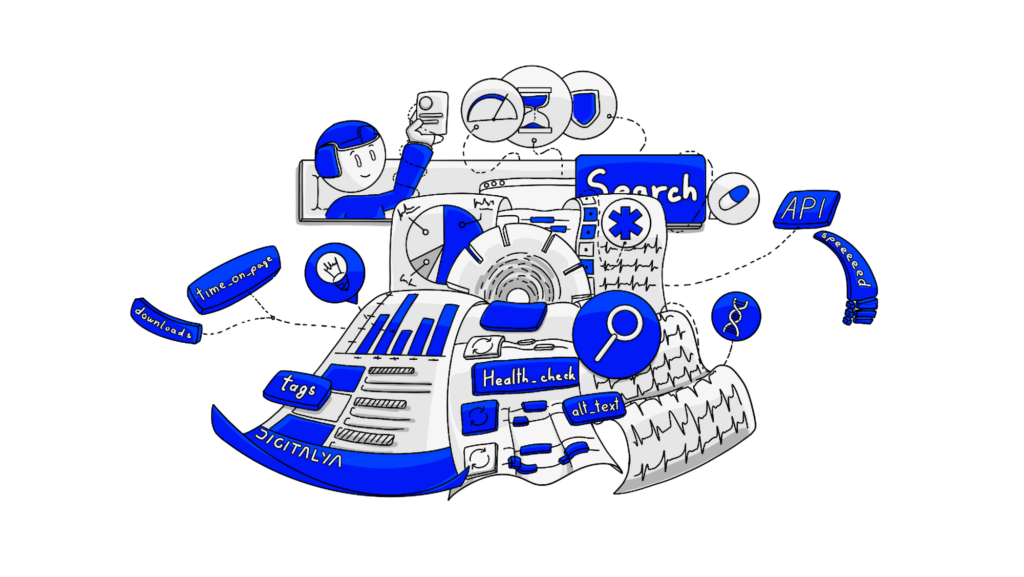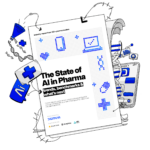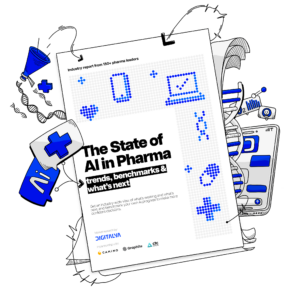When you have a product idea, it’s easy to get carried away. There’s always one more feature to add, a little piece of that, another button. But disorganized development is what makes you lose track of your end goal. You will see 5 awesome minimum viable product examples that will help you kick off your journey.
This is how a minimum viable product helps you. By developing a product with enough features to attract early users, you get the chance to learn more about your audience and see what they want to use.
1. What is an MVP?
In the words of Eric Ries, the author of The Lean Start-up, a minimum viable product is:
“that version of a new product which allows a team to collect the maximum amount of validated learning about customers with the least effort”
Long story short, an MVP is a product that has just enough features to attract users. Its purpose is to validate your idea in the early stages of product development.
What makes it important is the opportunity to collect feedback from the users. With this, you can iterate and make improvements in the future. An MVP is crucial in agile software development. This methodology is based on validation and iterating products based on user experience.
The term minimum viable product was introduced in 2001 by Frank Robinson, co-founder, and president of SyncDev, who defined the MVP as
“the right-sized product for your company and your customer. It’s big enough to cause adoption, satisfaction, and sales, but not so big as to be bloated and risky. Technically, it is the product with maximum ROI divided by risk. The MVP is determined by revenue-weighting major features across your most relevant customers, not aggregating all requests for all features from all customers.”

2. Why use an MVP?
In his book, The Lean Startup, Eric Ries said:
“The big question of our time is not Can it be built? But should it be built?”
A minimum viable product is a great way of finding out (before it’s too late) whether you should continue with your product idea.
As you’d expect, the dominant benefit of an MVP is gaining validated learnings about customers without fully developing your product. The sooner in the product development cycle you find out if your product is appealing to your targeted audience, the less effort and money you’ll spend on something that won’t succeed in the market.
The question “Why use an MVP” will be answered clearly when you see the success stories in the 5 awesome minimum viable product examples below.
Minimum Viable Product Disadvantages
- Not fully understanding an MVP’s intended use
When the term MVP is used loosely, some people understand that it means developing a product with the minimal amount of functionalities they can deliver. While this isn’t entirely wrong, it excludes the vital criteria that the MVP should have a feature set sufficient to be able to learn if the product is viable or not.
This means that your MVP provides no insights to influence your strategic decisions. Therefore, you have no chance to reduce the amount of effort or money you spend on product development—one of the most important minimum viable product benefits.
- Confusing the MVP with other types of minimum products
There are the Minimum Marketable Feature (MMF) or the Minimum Marketable Product (MMP). These are focused on earning. The MMP is a product that has the smallest possible feature set that will address the needs of the users while creating the desired customer experience—making the product marketable. This is a tool to reduce time-to-market. We will talk about other types of products further in the article.
There’s not much harm done with this confusion unless you forget to ask yourself if your product is the right one to satisfy a certain need.
Usually, people stress the minimum part of an MVP but forget about the viable part. If you do that, you risk delivering a product that won’t provide an assessment of how (or if) customers will use it.
- Not implementing the feedback you receive
An MVP was created, launched, and customers have used it. You received some feedback, but it doesn’t align with your vision, so you decided not to implement it.
The proper use of an MVP implies that the team might dramatically change the delivered product or even abandon it altogether based on the feedback it received. The purpose of the minimum part of an MVP is to enable teams to do the least amount of work possible to get useful feedback—or, as Eric Ries defines it, “validated learnings.” Otherwise, you risk working on a product that no one wants or uses.
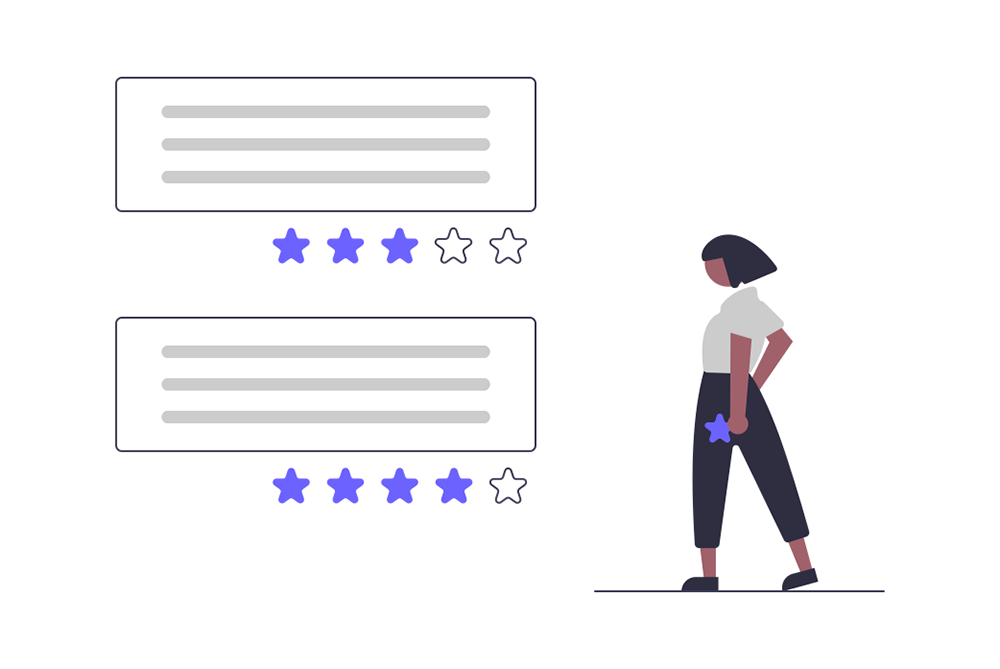
Minimum Viable Product Advantages
- The spotlight is on core functionalities
Using an MVP helps you keep clarity and focus on the main functionalities of your product. It allows you to test out your business concept—while minimizing the amount of time and money you spend.
In the initial phase of product development, you need to specify the core features and customer value of the software—write it down in a checklist. Having this primary vision always on your mind will help you stay on track and analyze your next steps better.
- Create a relationship with your initial users
It’s always a good idea to engage with new users and stakeholders during the initial stage of product development. Early customers can become brand ambassadors and give you priceless feedback. There’s nothing better than having your software customer-oriented.
Validated learnings and specific research of your target audience are incredibly valuable for software development. The feedback you get from early adopters can be much more valuable than any predictions or business analytics. Users can tell you which features they appreciate the most or what they would like to see in the next release.
- Quicker and easier release
First, using the concept of MVP prevents you from cluttering your initial product with unnecessary features. Therefore, your software can be adopted easily, and it won’t be complicated to use. Before you bring in more features, it’s good to test the UX and usability of your core product.
Additionally, the choice to develop only the core functionality will speed up product delivery. After the first release, you can test the main product hypothesis and gather feedback on both core features and desired ones.
- Minimal risks in product development
Many popular digital products were developed as MVP first: Facebook, Instagram, Spotify, Uber, Dropbox, and many others. You should always keep in mind that a polished, large-scale application will take years to develop—with a lot of money, time, and effort invested.
The MVP concept protects you from unnecessary spending or wasting time on products or features that your target market doesn’t want or won’t use. By developing your future product incrementally, you shelter yourself from the biggest risk: misusing resources.
Other types of “minimum products”
- Minimum viable product vs minimum marketable product
The minimal marketable product (MMP) is based on the idea of “less is more.” An MMP is a product with the smallest possible feature set that can still address your users’ needs, creates the desired user experience, and can be sold successfully. As we mentioned before, it’s a tool to reduce time-to-market.
As Steve Blank put it, a successful MMP is to
“develop the product for the few, not the many”
You need to focus on the features that will make an actual difference for your users. To discover these features, an MVP is a great opportunity.
- Minimum viable product vs minimum marketable feature
As the name suggests, a minimum marketable feature (MMF) is the smallest set of functionalities in your product that must be provided for the user to recognize any value. The term ‘marketable’ refers to a feature that provides sufficient value to the customer so that he buys the product.
An MMF addresses a certain need or solves a specific problem. It needs to be of high quality and usability, and it applies to both internal and external products.
- Minimum viable product vs proof of concept
A proof of concept (POC) is a small, internal validation project. Its purpose is to provide a “yes” or “no” answer to the question, “is the concept viable?”. It has to demonstrate functionality and feasibility for product development.
- Minimum viable product vs prototype
A proof of concept shows if a product concept can be done, and a prototype shows how it will be done. This usually starts with sketches and then eventually evolves into an interactive model that should look like the final product.
The purpose of a prototype is to display a product’s design and navigation flow—to maximize efficiency. Discovering errors in a prototype during the early phases of your project is its main purpose.
To recap, here are the main benefits of a minimum viable product:
- Product hypotheses validation with real-life data
- Time-to-market reduction for future feature releases
- Delivers value to early users
- Gain validated learnings
- Test your product/market fit before developing your full product
- Grow a user base
- Same time, money, and other resources

3. How do you create a minimum viable product?
There’s more than one minimum viable product framework that you can follow to find your MVP. We’re going to talk about the five-step process refined by Patrick Vlaskovits in his book The Entrepreneur’s Guide to Customer Development.
From a bird’s eye view, these are the five stages:
- Define your ecosystem
- Determine your value propositions for each of your stakeholders
- Hypothesize a final MVP
- Identify your biggest risk
- Design your value path
Let’s see what this process is all about.
1. Define your ecosystem
Drawing a map of your ecosystem is just a diagram used to display all of your target users. You’ll likely have multiple categories of customers using your product.
You should have a box for each stakeholder: users, customers, partners, and any other possible entities.
The next step is to define the value—more specifically, what your users will receive when using your product. Draw lines for who pays whom.
The last step here is to define how your product will be distributed. What marketing and sales channels will be used to get the product to its end users?
2. Determine your value propositions for each of your stakeholders
During this stage, you need to think about what high-level benefits your stakeholders will gain from your product and what they would be willing to trade in return. For example, your end-users could get to have more time with their family. Or your customers might obtain an increase in revenue.
3. Hypothesize a final MVP
Vlaskovits said that final MVPs would test assumptions for your business models, while intermediate ones verify components with high risk. To identify your final minimum viable product, visualize the basic functionalities of your product that you need to bring to each stakeholder to achieve the value you previously proposed.
Additionally, you should think of what each type of user would have to pay for using your MVP and how you should measure the viability of your MVP.
4. Identify your biggest risk
To validate your assumptions, you need to outline the risks associated with your business models and order them from highest to lowest. This way, you can determine potential blockers or where your product might fail. As a result, you minimize the possibility of failure and also the loss of resources before developing the full product.
5. Design your value path
During this final step, you need to visualize the customer discovery process. This journey should take you from the point you’re in today to your final MVP. Taking the ideas from your risk assessment from the previous step, imagine the core assumptions you need to test for each identified risk.
You will notice that your value path will be made out of intermediate MVPs that verify key hypotheses. If one assumption is validated, you move to the next one, and so forth, until you get to your final MVP.
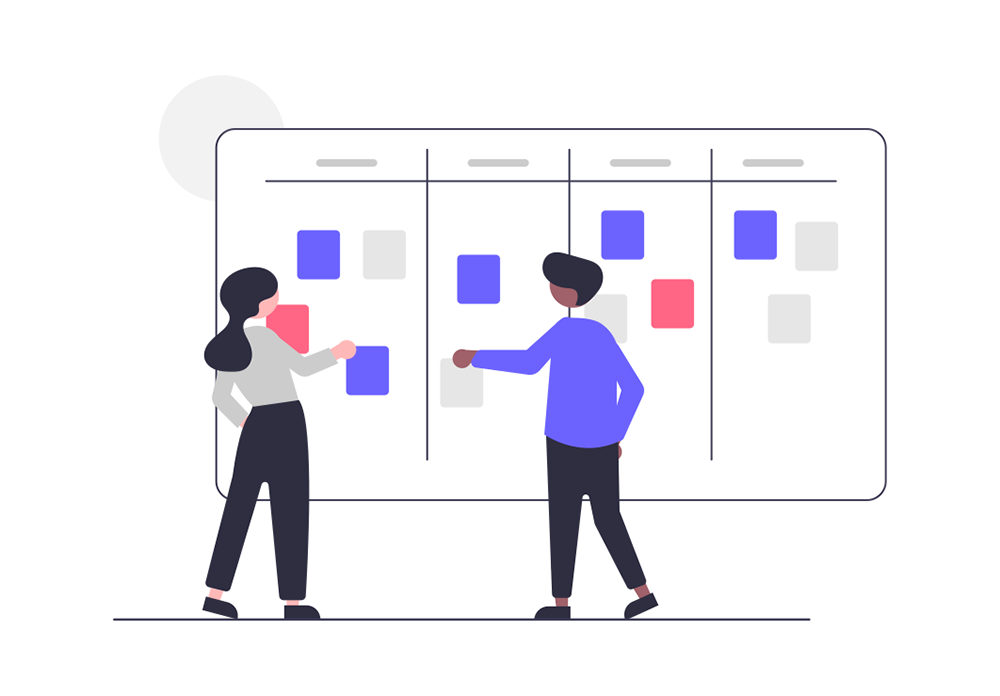
4. What makes a good MVP?
As a bottom line, a good MVP will be a product that works and is usable. When you want to cut corners, building the bare minimum functionalities will most likely make you fail.
A good MVP fixes a problem you want to address; the simplicity of the product won’t turn users away. Your final MVP should be backed by market research and a target audience. The trick is carefully selecting which features are vital to solving your customers’ problems.
Most of the time, it’s a good idea to opt for outsourcing with a software development company for creating your MVP. Such an agency will assist you in the full cycle of your product development, from creating a strategy to developing an MVP together.
5. Five awesome minimum viable product examples
There are many types of MVPs, generally put into two categories:
- Low-Fidelity MVP used to:
- Understand the problems of your customers better
- Validate your product ideas
- Verify if the problem you identified is worth solving
- Explore what solution would be more efficient
- High-Fidelity MVP, useful for:
Finding out how much customers are willing to pay for your product - Find early adopters of your product
- Define and optimize your marketing strategy
- Identify growth opportunities
- High-Fidelity MVP, useful for:
- Finding out how much customers are willing to pay for your product
- Find early adopters of your product
- Define and optimize your marketing strategy
- Identify growth opportunities
When deciding which type of MVP you need, here are a couple of questions you need to ask yourself:
- What is my biggest risk, and how can I avoid it?
- How much time do I have to develop my MVP?
- What’s my budget?
To make everything clearer, here are 5 awesome minimum viable product examples that were developed with the help of a dedicated team:
1. ClientZen
This is a platform that will turn your customers into brand ambassadors with the help of real-time feedback. ClientZen is the first customer-experience management platform designed especially for B2B digital agencies.
It uses artificial intelligence to measure how happy your customers are, in real-time, based on sentiment analysis
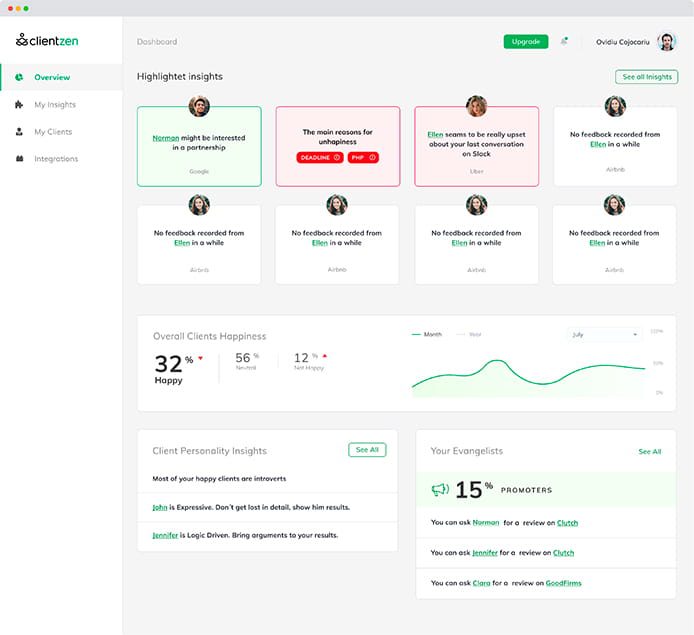
This web application provides data-driven analysis, which, in turn, generates accurate personality insights from your clients. This helps you take action to improve your NPS score and reduce the churn rate.
The initial challenge was having happy clients. Most of the time, the means through which we assess feedback don’t provide sufficient results—or it’s not in real-time. ClientZen wanted to provide an AI and ML-based solution to generate new business opportunities.
Here’s the solution Digitalya has come up with:
A web application that can be integrated with the most common means of communication, like Gmail and Slack, and provides accurate feedback—based on how your customers feel. As a user, you get personality insights generated from analyzing written communication and business advice. This all relies on the NPS level your client is on.
The problem this MVP answered is the need to gather and examine customer feedback. And the features it provides are:
- Login
- Dashboards for clients’ overview and different types of insights
- Communication platforms integration
2. FeetUp®
This is a mobile application that wants to bring inverted yoga to everyone by providing customized video content for any type of body. FeetUp® provides its users with a broad database of yoga, fitness, and relaxation classes.
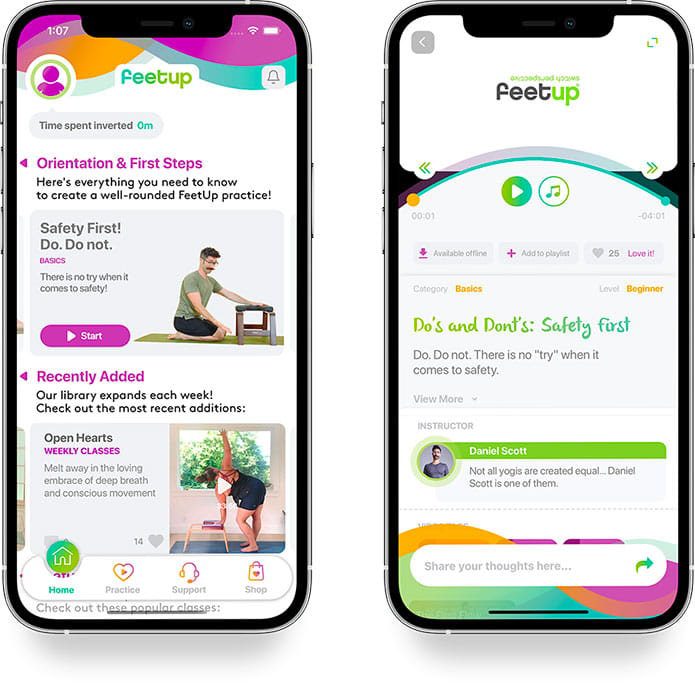
This MVP wanted to help its users practice yoga in the comfort of their homes without having to hire a personal yoga trainer. It provides instructions and classes for any type of practitioner. Another great functionality is the ability to do live streams as a teacher and to engage with the community.
The team delivered a mobile app that provides video and audio content to a large audience at the same time while also tracking their behavior. There’s a customizable admin area used to upload content and moderate activity. Here are what functionalities this MVP came with:
- Login
- Content database—video and audio
- Behavior and progress tracking
- Integrated shop
- Customer support
To get a better understanding of how a software development agency can help you launch an MVP and further develop your idea, take a look at the rest of our Case Studies.
3. Buffer
Buffer is an app that allows you to schedule your social media posts for multiple channels in one place. However, before the actual development processes, Joel Gascoigne, Buffer’s founder, tried testing the market.
He started with a simple landing page that simply described what the app did. If people were interested in this product, there was a signup form where they could leave their email and get notified when the app went online.

He promoted this landing page on social media and realized that there was a customer segment interested in his actual product.
The next step was figuring out how much potential customers would be willing to pay to use it. For this, he updated his landing page with some basic prices and saw how many people were signing up for the paid versions of the app.
After this process, Joel decided that it was time to develop the actual product—with a simple, minimalistic feature set. Shortly after that, Buffer gained more users and generated revenue.
4. Dropbox
Even though it’s hard to believe, Dropbox is another example of a successful minimum viable product. This started as a video of a prototype of the solution Drew Houston came up with. He did this so that people could get a feel of how the app would work before the actual development process.
After posting the video, he more than tripled the number of potential customers. People liked what solution he was proposing, and they signed up for the actual product.
5. Zappos
This is a “Wizard of Oz” type of MVP example. The whole MVP concept is that the project looks completely functional from an outside perspective. However, everything on the inside is human-operated. Everything is manual. This type of minimum viable product is also called “Manual-first MVPs” for obvious reasons.
Zappos is a great example here. The founder, Nick Swinmurn, wanted to check if people would buy shoes without being able to try them on first. So he took a picture at a store and promoted it on social media. He found out that he actually had a customer market when people started making purchases. Nowadays, Zappos is a successful business and was recently bought by Amazon—one of the many success stories.
6. Conclusion
An MVP is an efficient core piece of your experimentation strategy. You assume that your possible customers have a specific need, and you come up with a product to help them. Your dedicated team then delivers the final MVP that your users can use—this way, you gain validated learnings and crucial feedback on your idea. Based on all this information, you can either continue your work, adapt it, or move on to your next innovative project.
When choosing the type of MVP you want to work on, one of the most important factors that influence your decision will be your budget. You can estimate how much your app will cost based on what features you want to integrate into it:

